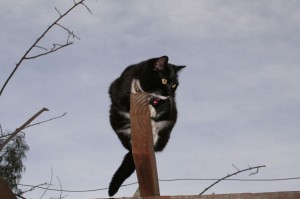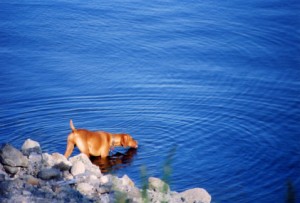Switching to a kidney diet
Why should I feed my cat with kidney disease special food?
- Specially formulated kidney diets are proven to improve the quality of life of cats with kidney disease. They also extend their life expectancy.
- Cats on kidney diets end up in hospital on a drip much less often than those on regular foods.
What is so special about kidney diets?
- Potassium is added to kidney diets because cats with kidney disease often have low levels of potassium. Low potassium blunts cats’ appetites and make them feel unwell.
- Phosphorous builds up in the blood of cats with kidney disease. High phosphorous levels put them off their food and eventually weaken their bones. Cats in untreated advanced kidney failure develop “rubber jaw” – the high phosphorous levels drain the calcium out of their jaw bones.
- Cats’ systems become more acidic in kidney failure. Kidney diets help buffer the acidity and improve the cats’ well-being.
When should I start feeding my cat a special kidney diet?
We recommend starting a special kidney diet when your cat is in stage 2 kidney (also known as renal) disease. This means that the blood creatinine levels are over 140 and/or the urine concentrating ability, the urine specific gravity (USG) is less than 1.036.
Cats in stage 2 kidney disease usually still have good appetites and are more likely to accept a new food.
How do I convince my cat to eat the new food?
- Switch to the new food gradually. Most cats need at least a week to make the transition and many take a month or so.
- Only try one brand of food at a time. Offer one brand for at least a week before trying another.
- Try mixing a little of the new food with the old and gradually increasing the proportion of new food.
- Alternatively provide both foods side by side and let the cat get used to the new scent and taste without being forced to consume it.
- Don’t be discouraged! Keep putting the new food out. If it is rejected take it away for the moment and put it down again at the next meal time.
- Serve food on a flat food dish like a saucer rather than a bowl. Some cats reject a food if their whiskers rub the side of the food dish.
- Serve food at room temperature or warmer.
- Some cats prefer food from a newly opened container every time.
- Other cats like their food stored in a plastic container rather than its original can.
- Offer foods with different textures – minced, pate, chunks – or different formulations – dry or moist. Many cats change their preferences when they develop kidney disease so don’t be afraid to offer something that they didn’t like before.
- Add flavour enhancers like low sodium chicken broth, tuna juice, oregano, brewer’s yeast, or a small amount of favourite food.
- Feed more moist food to increase fluid intake. Cats with kidney disease need to consume a lot more water per day than healthy cats.
- Make sure water is always available. Place water dishes near your cat’s favourite resting places. Cats who like to lap from dripping taps or shower recesses often like water fountains like the Drinkwell water fountain.



